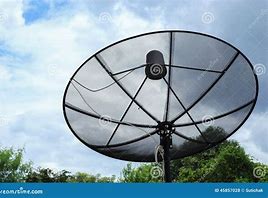The Evolution of Antennas and Satellite TV: How Modern Technology is Enhancing Entertainment Access

Strong 8k brings an ultra-HD IPTV experience to your living room and your pocket.
Entertainment has come a long way from the simple days of radio and broadcast television. With the rise of the internet and satellite technology, viewers have more control over their media consumption than ever before. Antennas and satellite TV have evolved significantly over the years, and as technology continues to advance, they provide access to a broader array of entertainment options. This article explores how modern innovations in antennas and satellite TV are enhancing the ways in which we access entertainment, while also discussing the future of television viewing.
The Beginning: The Birth of Television and Antennas
The television revolution began in the early 20th century, and with it came the necessity for antennas. Early TVs relied on over-the-air (OTA) signals received via large, often cumbersome antennas. These signals were broadcast through the airwaves, allowing households with an antenna to access free television content.
Key Milestones in Antenna Development:
1.1930s: The first television broadcasts were made, using rudimentary antennas that could only receive a limited number of channels.
2.1950s-60s: The introduction of the VHF and UHF bands expanded the number of available channels.
3.1970s: The development of rooftop antennas improved reception for viewers, reducing interference and increasing signal strength.
4.1990s: The introduction of digital antennas, designed to pick up higher-quality signals, marked the next major leap in antenna technology.
While these antennas were sufficient for their time, they were limited in range and channel access.
The Rise of Satellite TV: A Game Changer
In the 1970s, the development of satellite TV revolutionized the way people consumed media. Instead of relying on terrestrial broadcasting, satellite TV used communication satellites to transmit signals directly to receivers on the ground. This allowed for greater channel availability, better quality broadcasts, and the ability to access channels from across the globe.
Satellite TV gained momentum in the 1990s, with providers like DIRECTV and DISH Network dominating the market. By the mid-2000s, satellite TV was a common feature in households, offering hundreds of channels, including specialized networks dedicated to movies, sports, news, and more.
Statistics on Satellite TV Usage:
According to a report from the National Cable and Telecommunications Association (NCTA), as of 2020, over 35% of U.S. households had satellite television subscriptions.
A Statista survey found that DIRECTV and DISH Network combined for approximately 25 million subscribers in the U.S. alone in 2021.
The major benefits of satellite TV included high-definition (HD) content, access to a large variety of international channels, and the ability to subscribe to premium services like HBO and Showtime. However, the system wasn't perfect. The size of satellite dishes and the reliance on weather conditions to maintain signal quality were still challenges for many users.
The Digital Antenna Revolution
By the early 2000s, another breakthrough occurred in the form of digital antennas. Digital broadcasting, or DTV, offered clearer, high-definition television signals without the need for a satellite dish or cable subscription. Digital antennas allowed consumers to receive free, high-quality channels over-the-air.
The advent of HDTV (High Definition Television) meant that consumers no longer had to rely on costly cable or satellite TV subscriptions to enjoy high-quality television. With the switch from analog to digital broadcast in 2009, digital antennas became an essential tool for anyone who wanted to access free, over-the-air television signals in HD.
Table 1: Comparison of Analog vs. Digital Antennas
Aspect Analog Antennas Digital Antennas
Signal Type Analog broadcast signals Digital broadcast signals
Image Quality Lower resolution Higher resolution (HD)
Channel Availability Limited number of channels Access to HD channels, more content
Signal Interference Prone to static and distortion Less interference, clearer signal
Cost Generally cheaper Slightly more expensive but worth it
The ability to pick up a variety of local channels without needing to pay a monthly subscription fee appealed to many consumers, especially in an era when monthly cable or satellite bills were rising.
The Integration of Internet and Streaming Services
One of the most significant developments in the entertainment industry has been the rise of internet streaming services. With the advent of platforms like Netflix, Hulu, Amazon Prime, and others, traditional methods of content delivery such as cable and satellite began to face increased competition. More households started to cut the cord and ditch their satellite TV subscriptions in favor of internet-based content streaming.
In response, both antenna and satellite TV providers started integrating internet features into their services. For instance, satellite providers began offering internet-based on-demand content, while digital antennas became compatible with streaming services through smart TVs.
The Impact of Streaming on Satellite TV:
Cord-Cutting Trend: In recent years, the number of U.S. households subscribing to satellite TV has decreased. In 2019, approximately 25% of U.S. homes had cable or satellite TV subscriptions, compared to 70% in 2010.
Integration with Internet TV: Modern satellite TV services often offer combined packages, including access to streaming platforms like Netflix, making it easier for customers to access all their favorite content in one place.
Despite these changes, satellite TV still remains relevant, especially in rural areas where internet access may be limited, and streaming services are unavailable or unreliable.
Modern Antennas: Compact, Efficient, and More Powerful
As technology has advanced, so have antennas. Modern antennas are smaller, more efficient, and capable of delivering better signals than ever before. Indoor antennas now provide access to HD content, while outdoor antennas continue to offer broad channel reception in urban and rural areas alike.
Recent advancements have also brought smart antennas into the mix. These antennas can automatically adjust their orientation to find the best signal, making them more convenient for users who don't want to manually reposition them.
The Future of Satellite TV: The Role of 5G and Beyond
As we look toward the future, the development of 5G technology promises to further change the way we access entertainment. 5G's ultra-fast speeds and lower latency could allow satellite TV providers to deliver even better-quality content to users, potentially eliminating the need for satellite dishes altogether.
Additionally, satellite companies are already exploring the possibility of low-Earth orbit (LEO) satellites. Companies like SpaceX’s Starlink aim to provide high-speed internet and satellite TV via a network of small satellites orbiting the Earth, potentially offering coverage to every corner of the globe.
FAQs:
1. Are digital antennas still worth it in 2025?
Yes! Digital antennas provide access to free HD channels, and with the switch to digital broadcasting, they offer superior signal quality compared to older analog antennas. With the rising cost of cable and satellite services, digital antennas remain a popular choice for many viewers.
2. Can I use a satellite dish for internet access as well?
Some satellite providers, like HughesNet and Viasat, offer satellite-based internet services. However, it’s important to note that the speeds may not match up to what you would get from fiber or cable internet.
3. How much does a modern digital antenna cost?
Modern indoor digital antennas typically range from $20 to $100. The price depends on factors such as the antenna’s range and whether it offers any smart features.
4. Will satellite TV ever become obsolete?
While satellite TV usage has declined due to the rise of streaming services, it is unlikely to become obsolete anytime soon. It remains a reliable option, especially in areas without stable internet access, and continues to offer valuable features like international channels and sports networks.
5. What is the difference between satellite TV and cable TV?
Satellite TV uses satellites to broadcast content directly to a satellite dish, while cable TV transmits content through physical cables. Both offer similar channel selections, but satellite TV is often preferred for its broader range of international and specialty channels.
Conclusion:
The evolution of antennas and satellite TV has been a journey of constant innovation. From simple over-the-air broadcasts to satellite transmissions and digital antennas, the ways in which we access entertainment have transformed dramatically. The integration of the internet, smart TVs, and the rise of streaming services have reshaped the landscape even further. As we move into the future, advancements in 5G and LEO satellite technology promise even greater improvements in how we access entertainment, making it more accessible, efficient, and personalized than ever before. Whether you’re using an antenna to watch free, high-quality channels, or subscribing to satellite TV for exclusive content, modern technology has certainly enhanced the entertainment experience.
Note: IndiBlogHub features both user-submitted and editorial content. We do not verify third-party contributions. Read our Disclaimer and Privacy Policyfor details.







